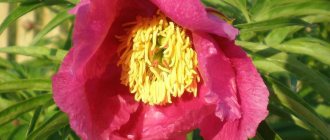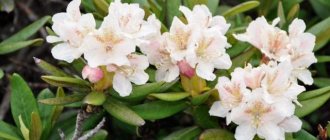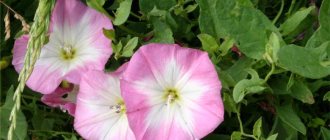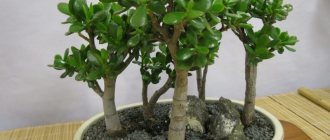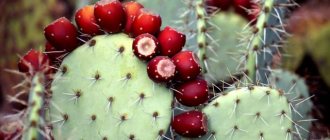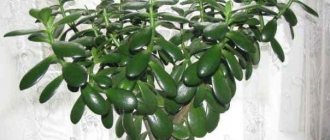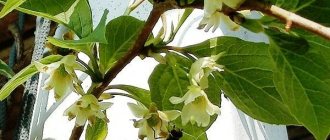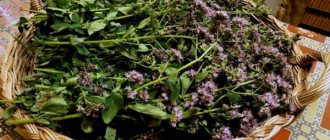A cure for many diseases, a spice, a sweet delicacy, an interesting perennial for landscape design, a natural insecticide - calamus can rightfully be called one of the most useful wild plants. Its unique properties have been used by people for more than four thousand years. Nowadays, they not only harvest wild calamus, but also grow it on plantations. Its rhizomes are used in medicine, pharmaceutical and food industries. This article describes the beneficial properties of this plant and recipes for its use to treat various diseases.
Useful properties of calamus
Substances contained in the rhizomes of calamus have the following beneficial properties:
- have an anti-inflammatory effect;
- produce a bactericidal effect;
- stimulate appetite;
- prevent gas formation in the intestines;
- have a choleretic effect;
- promote the removal of mucus from the respiratory tract;
- have a diuretic effect;
- enhance the secretion of digestive enzymes;
- produce a mild hypotensive effect;
- act as hepatoprotectors;
- eliminate heartburn;
- have a wound healing effect;
- strengthen gums and disinfect the oral cavity;
- reduce toothache;
- have antiparasitic activity;
- strengthen the nervous system;
- improve memory, vision and hearing, especially in the elderly;
- strengthen the immune system, prevent acute respiratory infections and flu.
Recent scientific studies have also revealed the anti-sclerotic and anti-tumor properties of calamus.
Due to its medicinal properties, calamus root is widely used in the treatment of diseases of the gastrointestinal tract, gall bladder and liver, kidneys and bladder, respiratory diseases, problems in the female and male genital area, to strengthen the nervous system, improve hearing, vision and memory in the elderly.
Traditional medicine recommends chewing pieces of fresh root to eliminate bleeding gums. Also, chewing the root pulp can help in breaking the smoking habit. The bitterness included in its composition exacerbates the gag reflex, which makes the smoking process very unpleasant and, over time, discourages the craving for a cigarette. Powder from the dry root is sprinkled on purulent wounds and ulcers.
For women
Calamus root is effective in treating the following disorders of the female genital area:
- colpitis;
- disruptions of the menstrual cycle;
- pathological menopause;
- ovarian dysfunction;
- frigidity (increases sexual arousal);
- amenorrhea and hypomenstrual syndrome.
In treatment, a decoction of the root is used, which is prepared as follows: 1 teaspoon of crushed dry rhizome is poured into 0.2 liters of cold water, brought to a boil and boiled under the lid for 10 minutes. Drink 1-3 glasses a day in small sips. Using the same recipe, a solution for douching is prepared.
For men
In addition to the medicinal properties of calamus in relation to a large number of common diseases, it can be useful for men specifically as a means of supporting reduced potency. Taking calamus preparations helps fight erectile dysfunction, increases male strength, increases libido and improves sperm quality.
Calamus root is used for men in the form of an alcohol tincture. To prepare it, 100 g of finely crushed rhizome is poured with 0.5 liters of alcohol (or vodka) and placed in a dark place. Every 3 days the mixture is shaken to activate the transition of active substances from plant materials to alcohol. After 14 days, the finished tincture is filtered into dark glass bottles and stored at room temperature in a dark place inaccessible to children for no more than 3 years.
Take 20-25 drops, dissolving them in 50 ml of water, three times a day, half an hour before breakfast, lunch and dinner. Drink in monthly courses with a break of at least 7 days. You can conduct no more than 6 courses per year. The same tincture can be rubbed into the hair roots to strengthen them and prevent baldness in men.
When to collect and how to store calamus
Calamus rhizomes are collected in autumn or spring by digging with a pitchfork. The collected roots are washed in cold water, the shoots and leaves are cut off, and air-dried for several days. After which the long roots are cut into pieces 15-20 cm long; those that are too thick are split lengthwise and dried under a canopy, spread out in one layer.
Heat drying can also be used, but at a temperature of no more than 25-30 °C, since the essential oil contained in the rhizomes evaporates at a higher temperature, as a result of which the quality of the resulting medicinal raw material decreases.
Well-dried pieces of calamus rhizomes should not bend, but break. When scrapped they have a whitish-pink color (less often with a yellow or greenish tint). Raw materials are usable for 2-3 years.
Contraindications
Many people believe that contraindications exist only for chemical medications, while medicinal herbs are harmless and can be taken by everyone. But this is far from true; among plants there are many potent and even poisonous species, so when using herbal medicine we must not forget about caution. Contraindications to the use of drugs containing calamus root are:
- all trimesters of pregnancy, breastfeeding;
- removed gallbladder;
- low blood pressure;
- renal failure;
- exacerbation of peptic ulcer;
- individual intolerance.
The main side effect of taking calamus root is nausea and vomiting. To avoid them, it is necessary to start treatment with minimal doses, and only after making sure that the body’s reaction is normal, gradually increase the dosage to the recommended one.
Attention! Calamus contains potent substances that may not be combined with other drugs - antibiotics, antidepressants, antiarrhythmics, etc. Therefore, you should consult your doctor about the possibility of simultaneous treatment with calamus and other drugs.
Description of calamus
It is not for nothing that this herbaceous perennial is called marsh; it is a hygrophyte - it grows only in damp, marshy places. Its creeping, sinuous rhizomes, up to 3 cm thick, reach one and a half meters in length. From below they are dotted with roots thick as cords, and from the upper part xiphoid green leaves more than a meter long rush upward, surrounding stems-peduncles, at the ends of which inflorescences appear in the form of a cob with a green leaf-veil. All parts of the plant emit a pleasant odor; the root also has a bitter and pungent taste.
Due to the structure of the inflorescences, the marsh calamus was first assigned to the Araceae family, but then a separate Araceae family was identified. The scientific name of the species, Acorus calamus, was assigned to it back in the mid-18th century; it means “reed calamus.” Common Russian names for this plant:
- iris - due to the similarity with irises in the nature of leaf growth;
- ir;
- flatbread;
- Yavr;
- Tatar cinquefoil, Tatarnik.
The last names did not appear by chance. It was the Tatars who played the main role in the spread of this plant in the Russian Federation. According to their observations, in the reservoirs along the banks of which calamus grew, there was always safe water for drinking. Therefore, during the conquest of Rus', nomads carried calamus roots with them and left them in the shallow waters of all rivers and lakes along the way, where the plants took root and grew.
Varieties and types
According to different systematization, the genus Calamus includes up to 6 species. There are two generally recognized varieties: common calamus (swamp calamus), characterized by higher growth, and compact grass. This miniature acorus, no higher than 30 cm, is most often used as an aquarium or indoor plant.
Variegated varietal varieties have been artificially bred, for example, Veriegata, whose leaves have a wide light border. It is also worth highlighting the “Pusillus” variety, which is valued by aquarists for its dwarf growth - its leaves do not rise above 10 cm.
According to legends that do not have scientific confirmation, calamus is the first, or at least one of the first, plants to appear on our planet.
Spreading
The marsh calamus grows on the Eurasian, North American and South American continents in areas with favorable conditions for it. The plant prefers to “keep its feet” in water, so it grows in wetlands and standing waters, in shallow waters of lakes and slow rivers, irrigation canals. The homeland of calamus is considered to be the territories of India and China, where it can reproduce by seeds, since insects that pollinate its flowers live there. In all other places where calamus grows, there are no pollinating insects, and the plant can only reproduce vegetatively - by dividing the rhizomes.
From Asia to other regions of the globe, calamus was spread by humans due to the valuable qualities of this plant. In medieval Europe, aromatic candied rhizomes were brought from Turkey as an oriental delicacy. The producers of these sweets did not reveal the secret of their production, but in the 16th century, the ambassador of one of the European countries managed to find out the secret and send the obtained calamus planting material by mail. European botanists were disappointed to recognize the mysterious root as calamus, which at that time was already widespread in Western Europe.
Around the same time, in European countries, calamus began to be grown to obtain medicinal raw materials. At the end of the 18th century, the plant was brought to America. Now calamus reed is grown in many European countries, Indonesia, Brazil, China, India, from where its dried roots are exported throughout the world.
Features of plant care
Since this herbaceous plant is a perennial, in order for it to bloom year after year, it is necessary to provide it with sufficient weeding. Shallow surface loosening of the soil is also a mandatory measure.
If the use of roots for specific purposes became the main reason for planting calamus, then after 3-4 years they can be dug up.
A feature of grass care can also be called the condition of the plant’s indifference to fertilizing. Fertilizers will contribute to its gigantic growth. Before preparing for winter, it is advisable to leave the foliage on the stem. This way the common calamus will wait out the winter more comfortably. With the onset of spring warmth, when young shoots begin to emerge, old leaves need to be combed out. But still, during severe frosts it is better to bring calamus indoors. Wintering in an open area is suitable for it only in southern areas.
When planting calamus or marsh calamus in the garden, you should choose a place where its neighbors will be trees or flowers that bloom much earlier. Then the growing grass will be able to save the landscape appearance of the entire garden area.
Having looked at the photo of calamus, it becomes clear that this herbaceous plant can decorate any garden. It is impossible to ignore its beneficial properties, which have been known to mankind for many hundreds of years. The beneficial qualities of calamus were first described by Hippocrates, so it is not surprising that the healing properties of this herb have found application in our time.
Don’t forget to subscribe to blog news, and share interesting and useful articles with your subscribers.
Chemical composition
The medicinal properties of calamus roots have been used since ancient times; ancient Greek and Roman doctors prescribed infusions from it to their patients. And in the twentieth century, the chemical composition of the plant was studied, and all its biological effects were explained. By distillation using steam, the essential oil of calamus is extracted from the roots, which owes its spicy smell to the high content of the volatile aromatic substance asarone. The oil has a yellow-brown color; dry raw materials contain about 5%. The following were found in the oil and dry residue of calamus rhizomes:
- asarone and other sesquiterpenes;
- phytoncides;
- camphor;
- valeric, palmitic and acetic acids;
- phenols;
- bitter glycosides;
- vitamins C and B4;
- mucous, tannins;
- starch;
- iodine;
- other useful compounds.
These substances give the pulp of rhizomes a bitter taste, pungency and spicy aroma, and when they enter the body they cause a whole range of positive biological effects.
Application in medicine
Calamus has long been used in Eastern and European medicine to treat a wide variety of ailments. Now it is used both in folk and official medicine; doctors often prescribe drugs containing it for gastritis, heartburn, flatulence, stomach and duodenal ulcers, and cholelithiasis. In pharmacies, calamus root is sold in the form:
- dried crushed raw materials, including in filter bags;
- alcohol tincture;
- extract in tablets;
- as part of complex preparations - Vikair, Oimetin, Vikalin.
Dried root can be used to prepare powder, tinctures and decoctions.
Attention! It should be remembered that calamus root is a potent drug, so the recommended dosage and duration of treatment courses should not be exceeded.
Treatment of gastritis
For the treatment of gastritis, as part of complex therapy, medications containing calamus rhizome extract are prescribed - Vikair, Vikalin. Herbalists also recommend using infusions and decoctions of the rhizome, and herbal collections containing it. The most popular recipe: a teaspoon of raw material per glass, cook for 10 minutes, consume 0.5 hours before a meal, 0.5 cups of the product four times a day.
Ulcer treatment
Calamus root should not be used during periods of exacerbation of stomach ulcers. The rest of the time, tablets containing Vikalin, Vikair, as well as decoctions and tinctures from plant materials are used in complex therapy. Herbalists recommend taking half a glass of decoction 1 tsp. rhizomes in a glass of water before each meal (20 minutes).
Treatment of skin diseases
Due to the anti-inflammatory and bactericidal properties of calamus, it is used in the treatment of difficult-to-heal and festering wounds and ulcers. The dried rhizome is ground in a mortar or ground in a coffee grinder to a powder and sprinkled on previously cleaned wounds and ulcers. You can also wash the affected areas of the skin with a concentrated decoction.
To quickly cleanse the skin, it is recommended to take an infusion of a collection taken in equal parts: calamus and steel grass roots, nettle grass and string, heather branches, pine buds and juniper fruits. After mixing the ingredients, add a tablespoon of the mixture to 0.35 liters of water and leave for 20 minutes. in a water bath. Take 0.5 tbsp. x 4 rub. before eating.
Heartburn
In ancient medical books, it is recommended to use dried calamus root powder against heartburn. It is swallowed a small pinch (0.3-0.5 g) three times a day, washed down with water. This remedy eliminates heartburn, relieves inflammation of the mucous membranes of the esophagus and has an analgesic effect. A decoction or alcohol tincture of the rhizome works in a similar way.
Pancreatitis
Calamus root helps reduce inflammation of the pancreas during pancreatitis; preparations with it are used in combination with other medications. In herbal medicine, a decoction of rhizomes is used, prepared according to the same recipe and according to the same scheme as in the treatment of gastritis. You can take powder from the root, as in the treatment of heartburn, for greater effectiveness, washed down with centaury infusion, which is prepared at the rate of 1 tsp. dry herbs in 200 ml of water, leave for 20 minutes in a water bath.
Toothache
If your tooth hurts and you can’t visit the dentist, you can relieve the pain with an alcohol tincture of calamus root. It can be bought at a pharmacy or prepared by taking 0.1 kg of crushed rhizome in 0.5 liters of alcohol and leaving it for 15 days in a dark place at room temperature. A cotton wool soaked in the infusion should be applied to the painful tooth, and the pain will subside. The alcohol solution can also be used for rinsing the mouth by diluting 1 tbsp. l. in half a glass of warm water.
Hair loss
One of the secrets of beauties of past centuries who had luxurious long braids is the use of calamus root in hair care. Here is this old recipe: for 4 liters of cold water, take a full cup of calamus root and burdock root and two cups of hop cones, simmer for 10 minutes, use the decoction cooled to a comfortable temperature for washing and rinsing your hair twice a week. The healing properties of calamus help eliminate dandruff, strengthen hair and stimulate its growth.
Calamus root against nail fungus
Foot baths will help in the fight against nail fungus. The decoction for them is prepared as follows: 2 tbsp. l. mashed rhizome plus half a liter of cold water, heat and boil for 10 minutes. The toes are immersed in a moderately hot broth and kept for 20 minutes. Do it daily for 10 days. You should take a tablespoon of the same decoction orally before meals, diluting it in half a glass of water.
Cold treatment
The bactericidal, expectorant and anti-inflammatory properties of calamus rhizomes allow this remedy to be successfully used to treat colds. Used in the form of tea - 2 teaspoons are poured into a thermos with 0.5 liters of boiling water, infused for at least an hour and drunk 1-2 glasses throughout the day.
Periodontal disease
For periodontal disease, it will be beneficial if you add finely ground calamus root to toothpaste. The powder is mixed with toothpaste in a 1:1 ratio and brushed teeth morning and evening. This eliminates unpleasant odor and improves the condition of the gums.
Tonic tea
- Calamus roots (1 part)
- Veronica officinalis (2 parts)
- St. John's wort (14 parts)
- Lovage, root (4 parts)
- Wild strawberry, leaves (2 parts)
- Juniper, fruits (1 part)
- Ruta fragrant (4 parts)
- Yarrow (2 parts)
- Chicory root (2 parts)
- Rose hips, fruits (4 parts)
2 tbsp. collection, pour 0.5 liters of boiling water. Leave overnight. Take 3 times a day, 30 minutes before meals, in equal parts.
Where else is calamus used?
In addition to medical purposes, calamus is used:
- in the food industry - as a spice and natural flavoring for confectionery, baked goods, and drinks;
- for the production of candied fruits from the root and jam from the lower parts of the leaves;
- as fragrances for adding aroma to shampoos, creams, soaps and other products of the cosmetic and perfume industry;
- in the alcoholic beverage industry - to add aroma and bitterness to alcoholic beverages;
- for designing ponds in landscape design;
- in everyday life - to repel insects;
- in veterinary medicine – for the treatment of animals;
- as a fodder crop.
Also, rivets for barrels are made from rhizomes, starch is made, and they are also used in tanning leather. The fragrant leaves of the plant are used as a traditional decoration for houses and churches for the holiday of Trinity.
Procurement of raw materials
Calamus rhizomes are harvested in late autumn or early spring, before the onset of floods. The raw materials are dug out with a pitchfork, washed, cleared of roots, leaves and bark, cut into pieces of about 20 cm and dried in the shade. It is not allowed to heat the rhizomes above 30°C during the drying process, because this leads to evaporation of essential oil and deterioration of the quality of raw materials.
During the drying process, the weight of the raw material decreases by 4 times. Drying is considered complete if pieces of rhizomes break when bent. The shelf life of the product does not exceed three years. From one square meter you can collect 0.2-1.2 tons of fresh rhizomes.
Reproduction, planting and care
Calamus reproduces easily and does not require special agricultural technology; it can be easily grown on your own plot.
Soil and lighting
Both swampy, damp areas with close water occurrence and light sandy loam are suitable for calamus, subject to regular moderate watering. The optimal place for planting is the muddy shore of a reservoir with soil rich in sand and peat.
In a dry, low-moisture place, the plant will grow, but will be smaller - 60-70 cm in height.
Lighting is preferably diffused, without direct sunlight hitting the leaves, but quite intense.
Reproduction
In Russian conditions, calamus is propagated only vegetatively - with small pieces of root. Cuttings are harvested in spring or autumn: the root is removed from the water using a fork or rake and wrapped in damp cloth or moss. Immediately before planting, the rhizome is cut into pieces 10-20 cm long, which must have 1-2 buds.
In Russia, Calamus marsh is propagated by dividing the rhizome.
Important
You can divide the rhizome for propagation no more than once every 4-5 years.
Landing
The optimal time for planting in water is September-October, in soil - May-July. The site is dug up to a depth of 20-30 cm, the roots and stems of predecessor plants are removed, complex mineral fertilizer is applied (per 1 m²) 10-15 g of potassium salt, 20-30 g of superphosphate, 15-20 g of ammonium sulfate. Instead of mineral fertilizing, you can enrich the soil with 3-4 buckets (per 1 m²) of rotted peat or compost.
The cuttings are laid horizontally in holes 10-15 cm deep. Sprinkled with a 1-2 cm layer of soil or planted under water to a depth of no more than 20 cm. The distance between plants is 15-20 cm, between rows about 50 cm.
Care
Care consists of timely weeding and watering. Overgrown bushes can survive without watering for up to 3 weeks.
